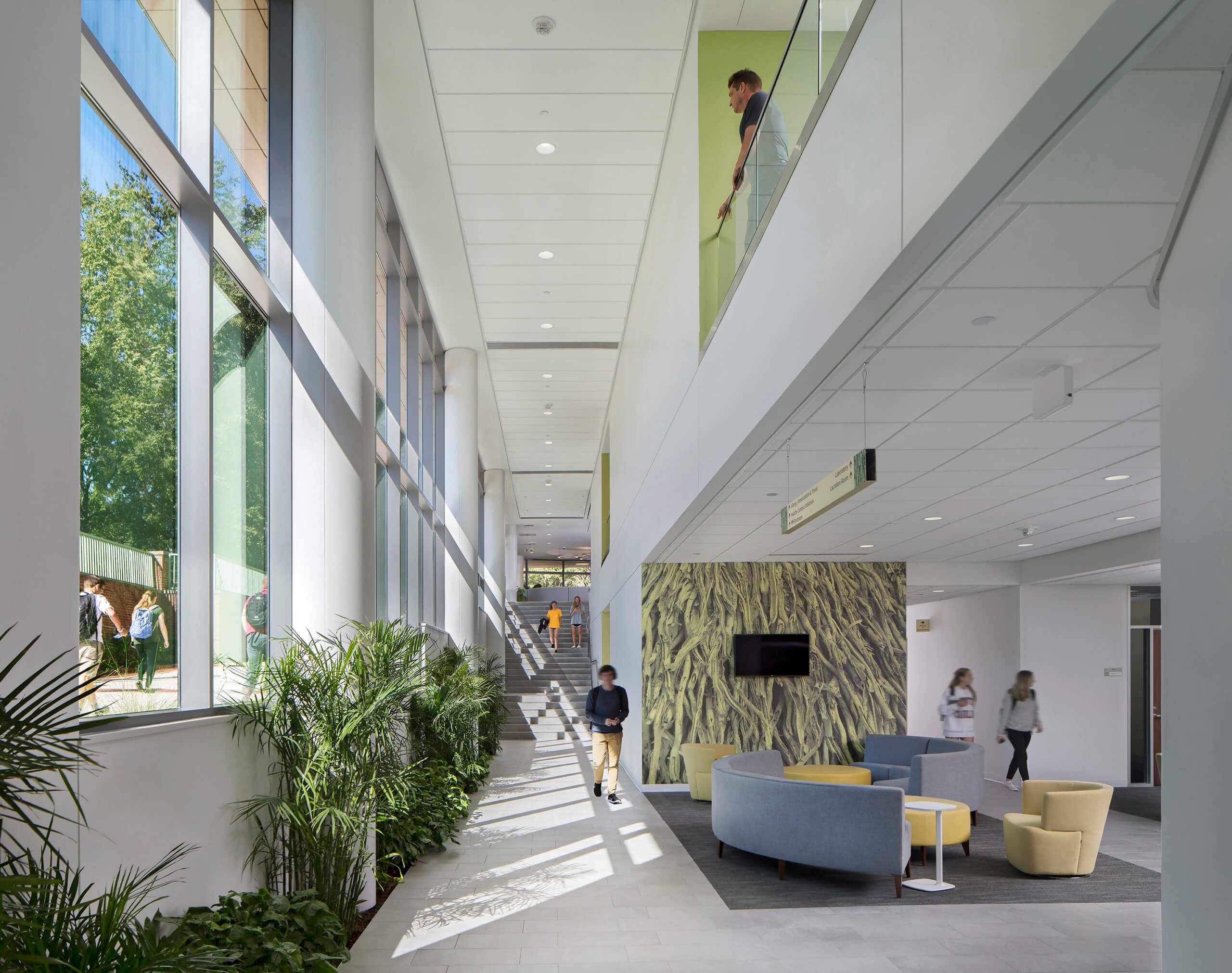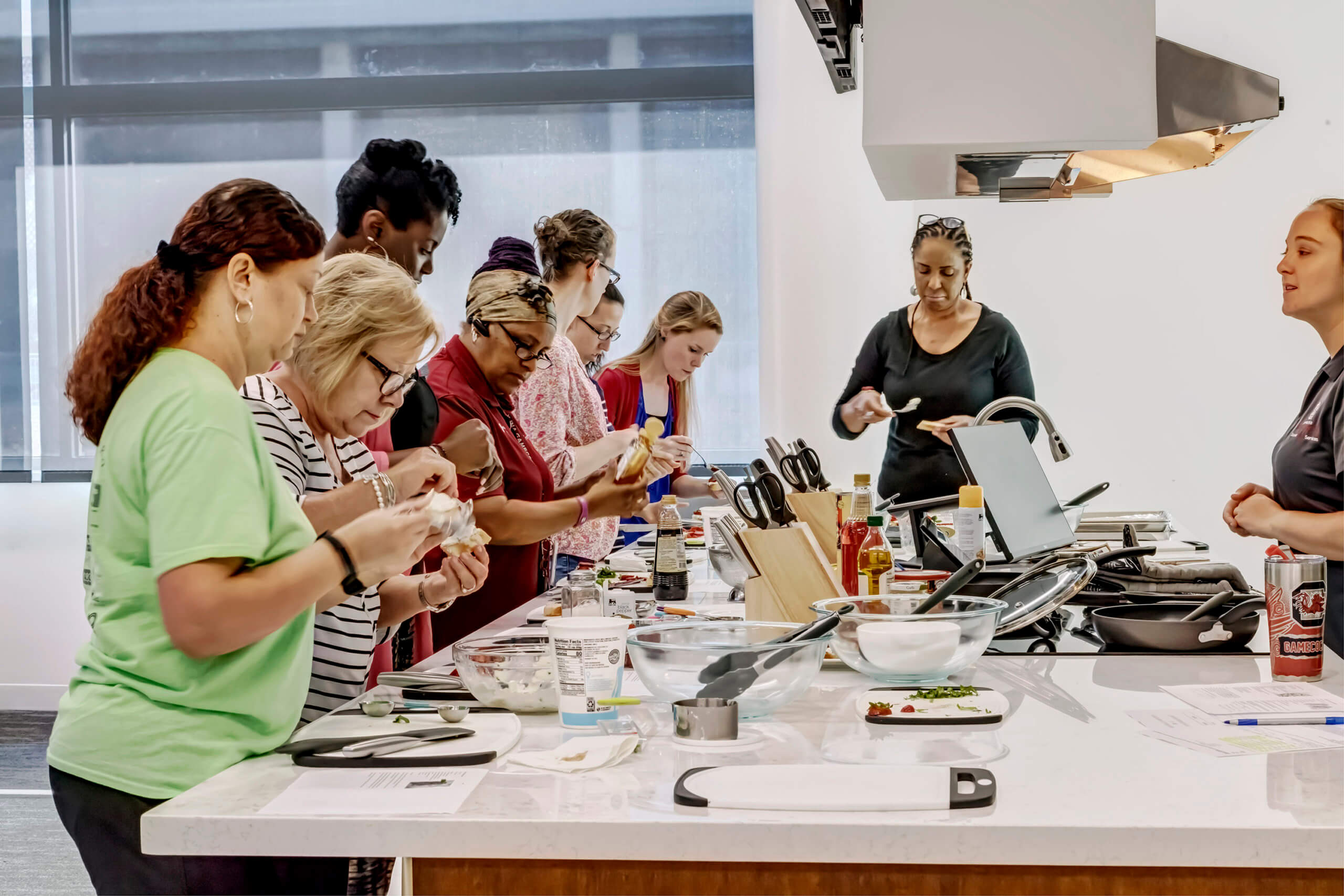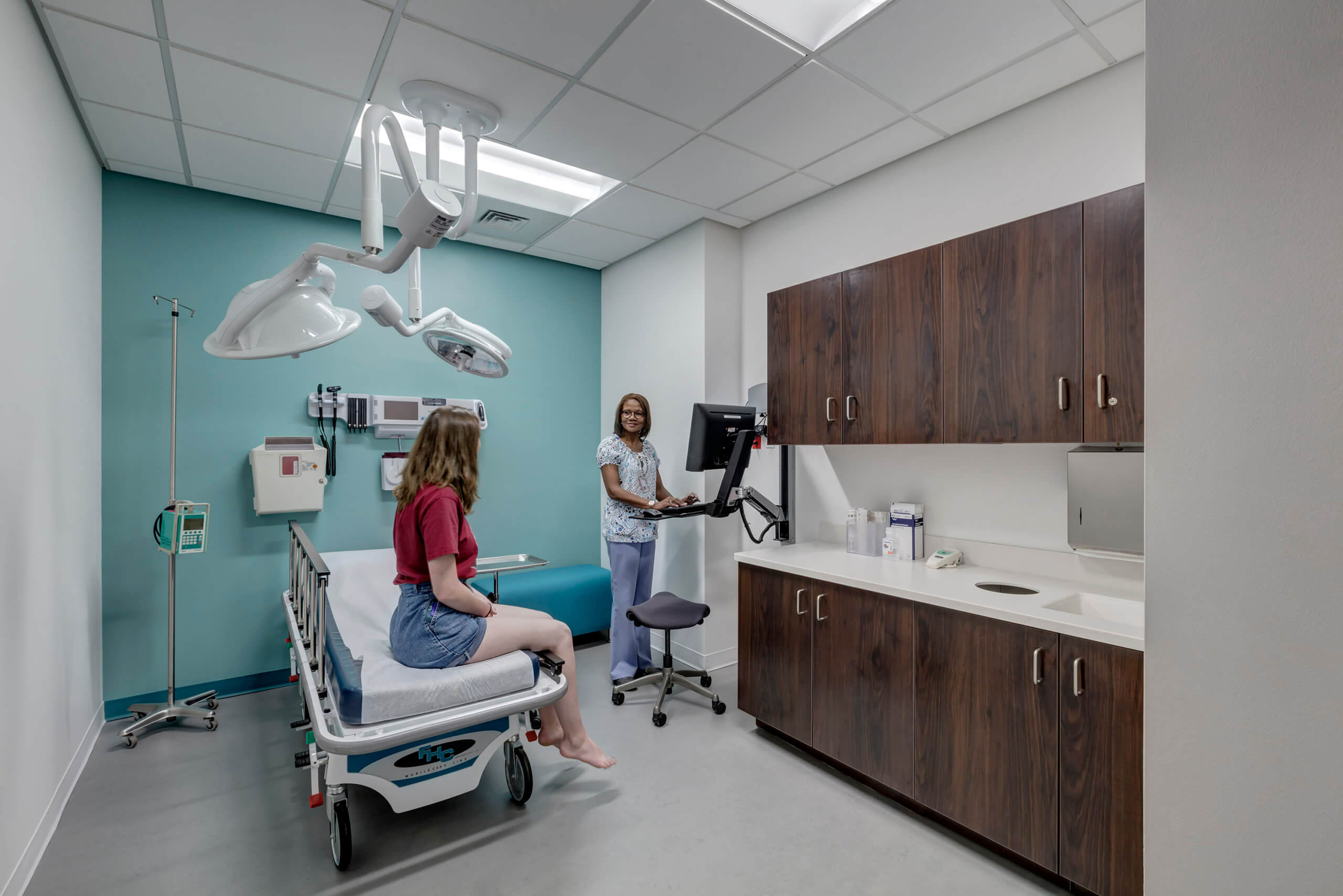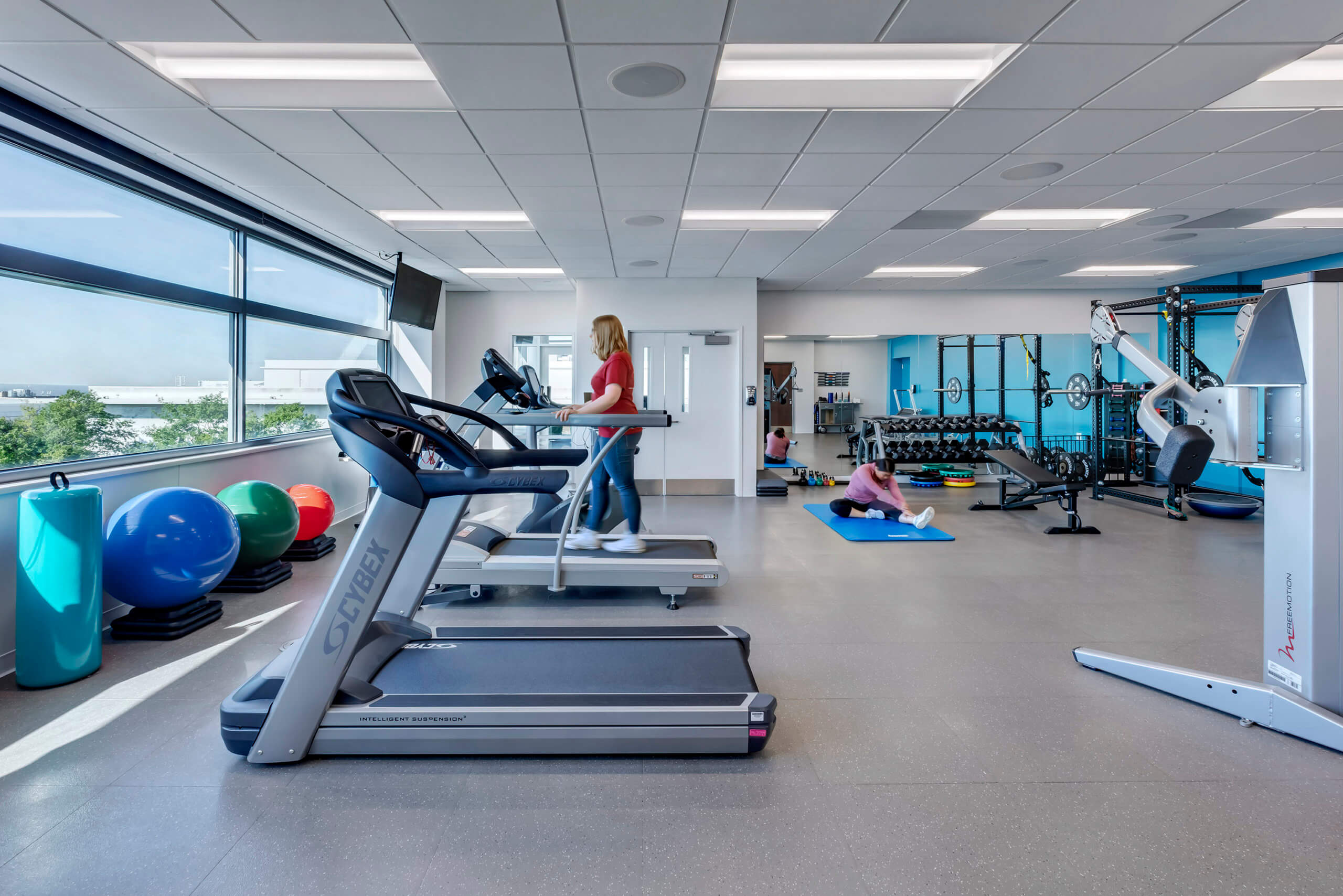This university took COVID response into their own hands, with gorgeous results
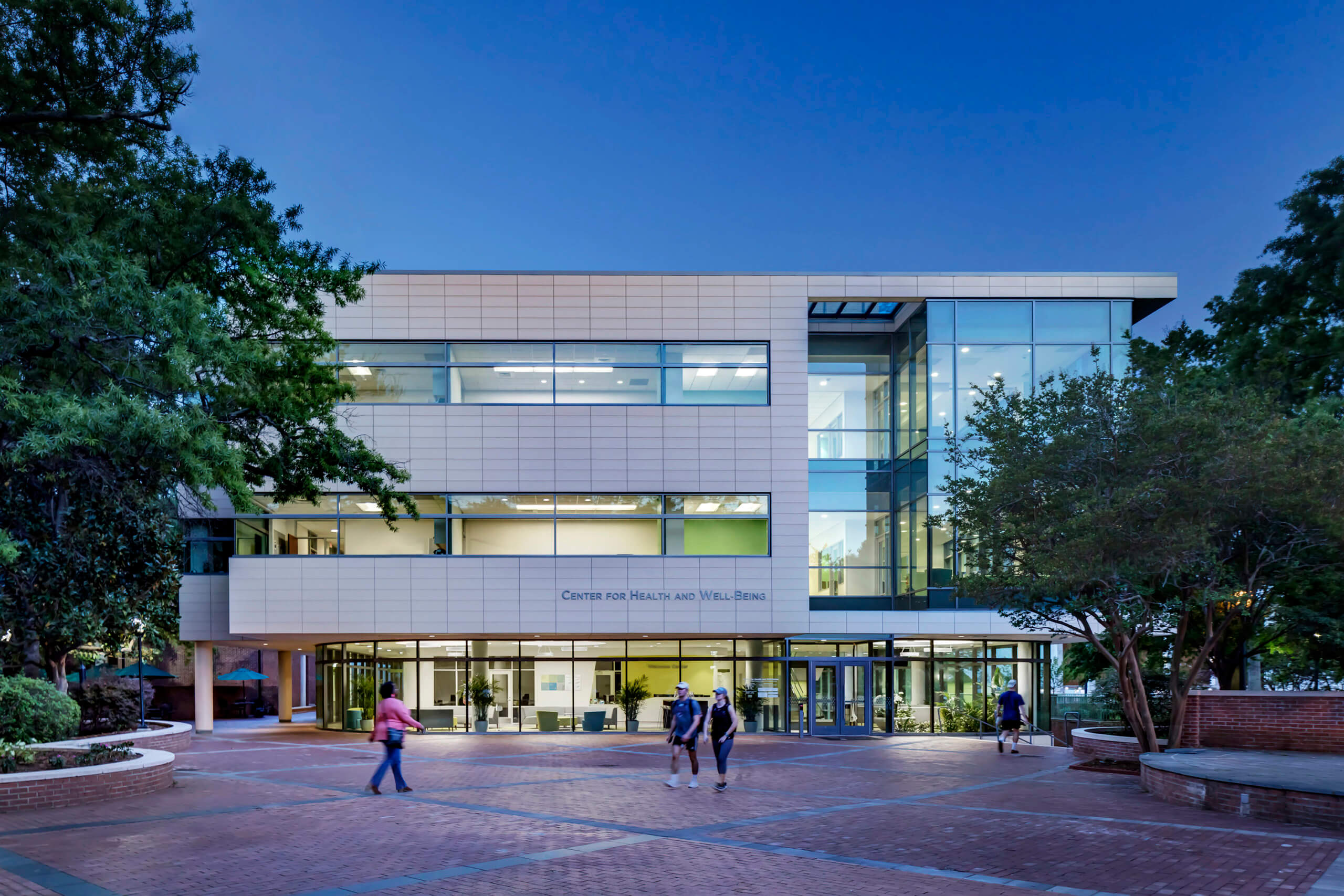

When the COVID-19 pandemic upended colleges across the country, leaders at the University of South Carolina in Columbia responded quickly. The Center for Health and Well-Being became the command center for the university’s pandemic response. Offices on the fifth floor of the building were transformed to oversee physical and mental health responses during the pandemic. Classrooms turned into screening and testing areas, at one point moving through 1,500 students within six hours, and exam rooms provided space for telehealth counseling and room for staff to spend the night if necessary. Another room was designed as a negative pressure room for infected students.
The wellness area on the second floor of the Center’s two-story atrium, framed by glass walls looking out to landscaped gardens and sky, had been a popular area for students to pray, meditate, and hold yoga classes. During the pandemic, the area, which prominently features colors and messages of wellness, become a natural backdrop for popular virtual yoga and meditation programs.
We could never have anticipated the pandemic. But, in re-imagining the role of the student health center, the goal was to move from simply treating illnesses to promoting health and wellness in all its forms – physical, mental, social and spiritual. One of the key principles in our approach was flexibility: understanding that student needs are dynamic, and delivery of care must change and adapt accordingly. The pandemic has driven home just how important that is. As Dr. Deborah Beck, Chief Health Officer and Associate Vice President for Health and Wellness, says: “We went through this storm as a team, which we couldn’t have done without this building.”

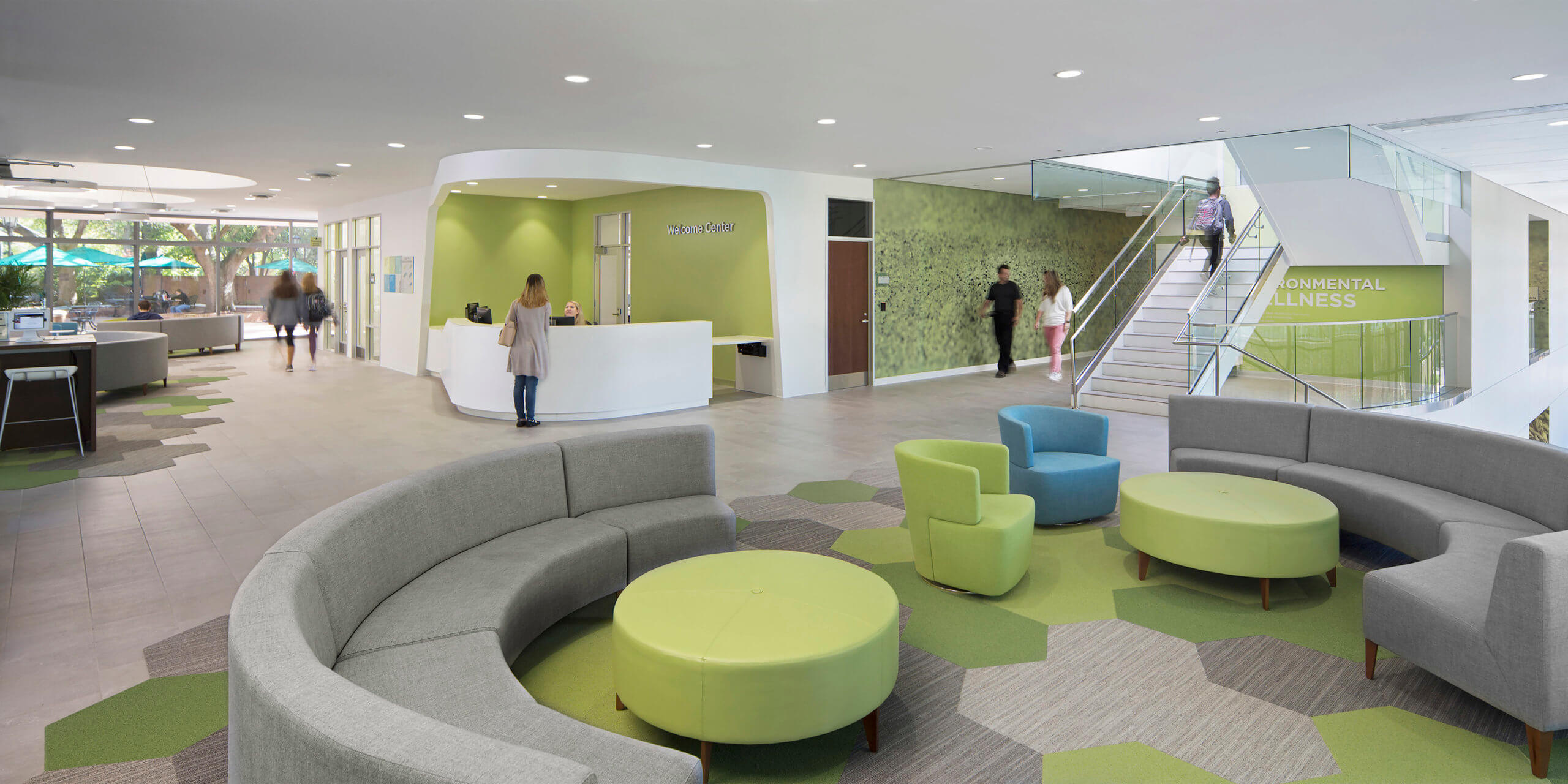
The LEED Gold certified Center design grew out of discussions with students, faculty, parents and health care professionals, and is a cornerstone of the University’s Healthy Carolina campaign, which aims to make health and well-being central to everyday life and helps boost academic performance and retention. USC consolidated wellness, prevention, advocacy, and comprehensive patient care functions that had been spread across five campus buildings into a 68,000 sq. ft. building. Administrators recalled the H1N1 pandemic in 2009, and wanted to ensure that the new center was capable of handling large numbers of students in case of an emergency.
Light-filled and surrounded by mature oak trees, the Center is intentionally located at a campus crossroads to create a highly visible and approachable facility. Cream-colored terra cotta cladding references older campus buildings, some built shortly after the Civil War. A floor-to-ceiling glass wall stretches along the east side of the Center, with horizontal bands of windows cut out and wrapping around the north and south sides, ensuring that all public areas – including spaces for students to hang out, drink coffee, have meetings – have a direct connection to the outdoors and a feeling of tranquility.
The two-story atrium, featuring a calming green and yellow palette, anchors the building. Wide stairways reach from the ground floor to the top floor, promoting more activity throughout the day than taking an elevator. The first two floors include a pharmacy, optical retailer, and wellness and nutrition classrooms. The third and fourth floors include exam rooms, physician offices, counseling, and physical rehabilitation rooms. The fifth-floor houses administrative offices and a rooftop terrace for staff to relax.
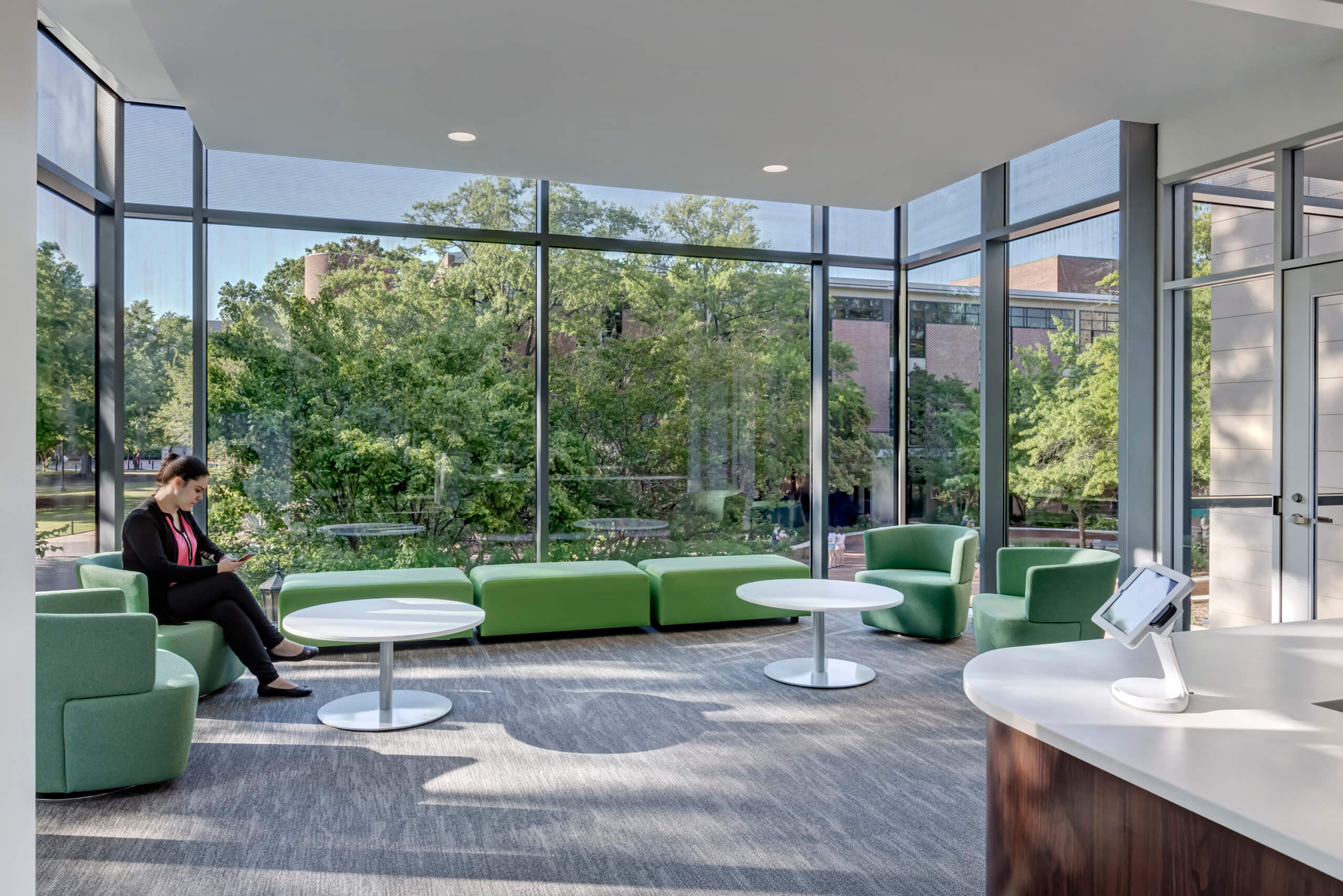
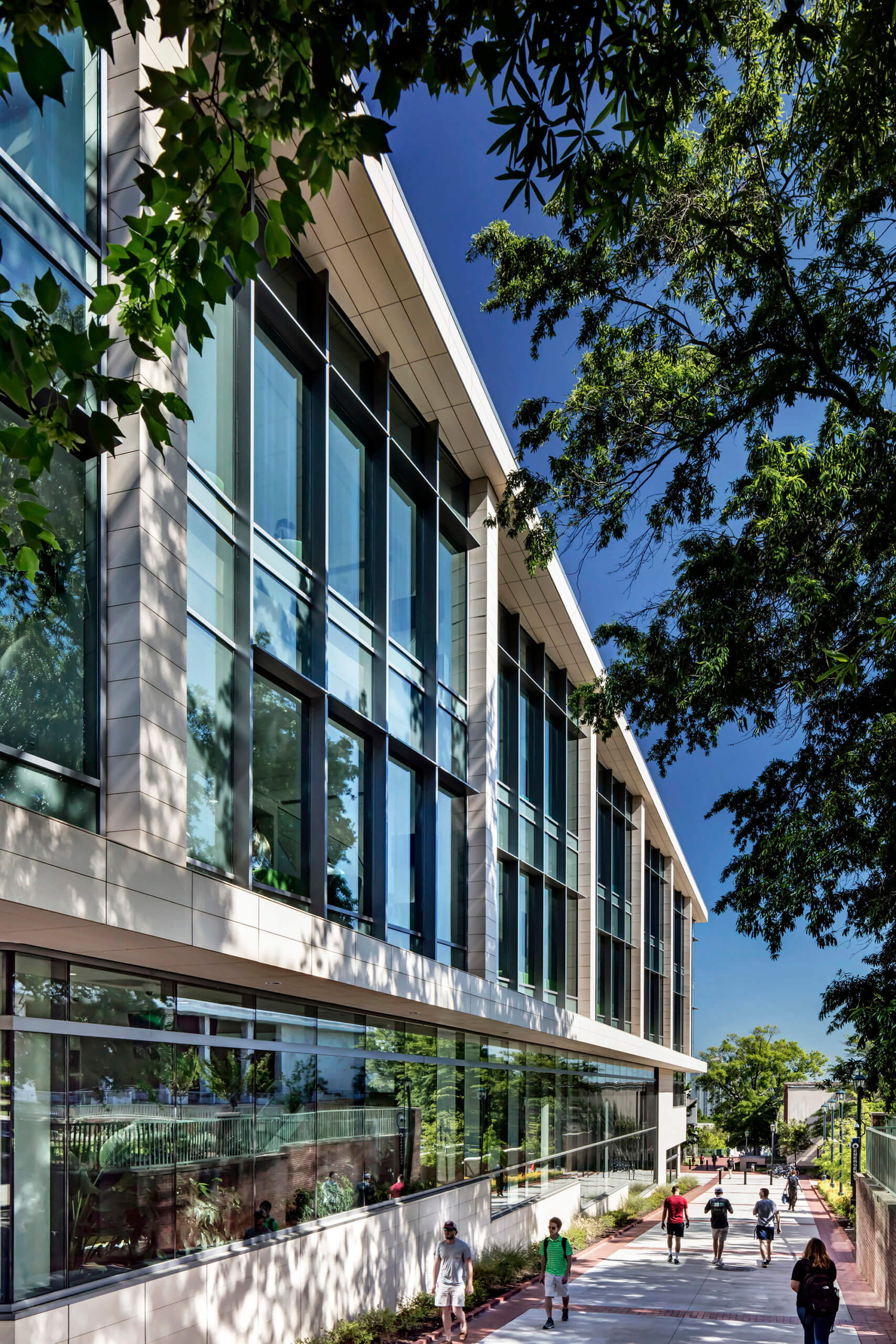
We drew on the principles of biophilia, where design is influenced by nature and is proven to positively influence well-being. “We wanted everyone to feel one with nature and feel healthy just walking through,” says Dr. Beck. “We didn’t want waiting areas, we wanted these more open spaces so people can look right and left and see nature and the outdoors, to take advantage of the biophilia concept.”
Central to the planning was providing access to mental health services, an even more pressing concern since the pandemic. A survey in the Fall by the American Council of Education found that nearly 70 percent of college and university presidents identified student mental health as among their most important issues. Early in our planning process, we heard there was a stigma attached to seeking mental health services on campus. A behavioral specialist was incorporated into the primary care area to enhance screening and provide immediate access to counseling. Images and signage combine to promote a sense of calm, ease of wayfinding, and wellness and health education opportunities, integral to the seven pillars of wellness: environmental, intellectual, emotional, physical, social, spiritual, and occupational.
We are thrilled that the Center for Health and Well-Being has been recognized for design excellence within our industry by AIA South Carolina and AIA Columbia Chapters. By listening to both students and the community and thinking expansively, we have created an innovative and collaborative space specially designed to treat multiple needs and which has proved adaptable during this extraordinary pandemic. “You walk into this building and there is a ‘wow’ factor among students, parents, administrators, and the board of trustees. When they walk through, they can see the messages of wellness,” says Dr. Beck. “It adds value to retention and recruitment, and reinforces the broader vision of Healthy Carolina.”
